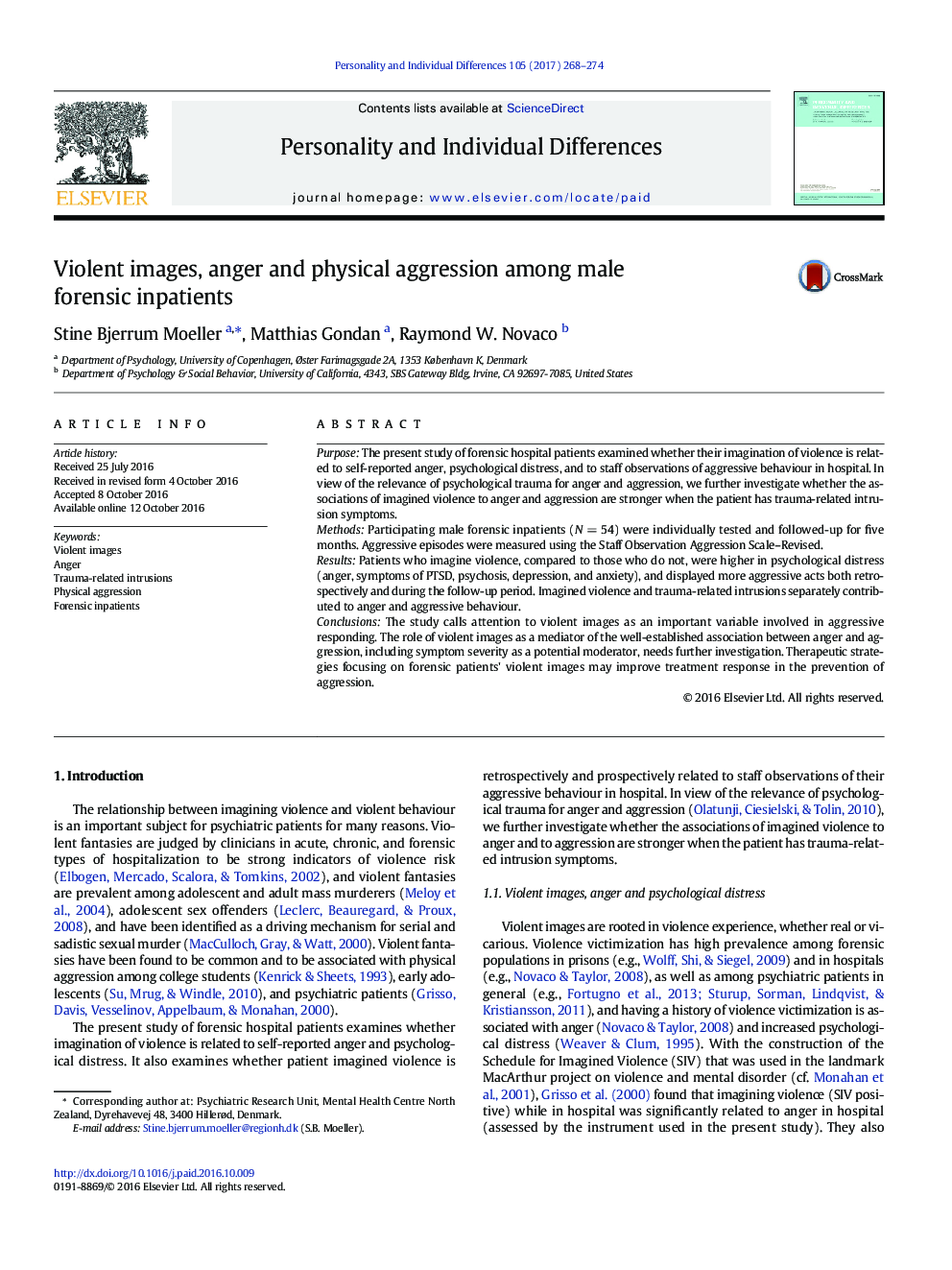| Article ID | Journal | Published Year | Pages | File Type |
|---|---|---|---|---|
| 5036059 | Personality and Individual Differences | 2017 | 7 Pages |
â¢Forensic inpatients who imagine violence have complex clinical needs.â¢Imagined violence contribute to anger and aggressive behaviour.â¢Treatment to prevent aggression may improve by focus on imagined violence.â¢The role of violent images in anger and aggression needs further investigation.
PurposeThe present study of forensic hospital patients examined whether their imagination of violence is related to self-reported anger, psychological distress, and to staff observations of aggressive behaviour in hospital. In view of the relevance of psychological trauma for anger and aggression, we further investigate whether the associations of imagined violence to anger and aggression are stronger when the patient has trauma-related intrusion symptoms.MethodsParticipating male forensic inpatients (NÂ =Â 54) were individually tested and followed-up for five months. Aggressive episodes were measured using the Staff Observation Aggression Scale-Revised.ResultsPatients who imagine violence, compared to those who do not, were higher in psychological distress (anger, symptoms of PTSD, psychosis, depression, and anxiety), and displayed more aggressive acts both retrospectively and during the follow-up period. Imagined violence and trauma-related intrusions separately contributed to anger and aggressive behaviour.ConclusionsThe study calls attention to violent images as an important variable involved in aggressive responding. The role of violent images as a mediator of the well-established association between anger and aggression, including symptom severity as a potential moderator, needs further investigation. Therapeutic strategies focusing on forensic patients' violent images may improve treatment response in the prevention of aggression.
